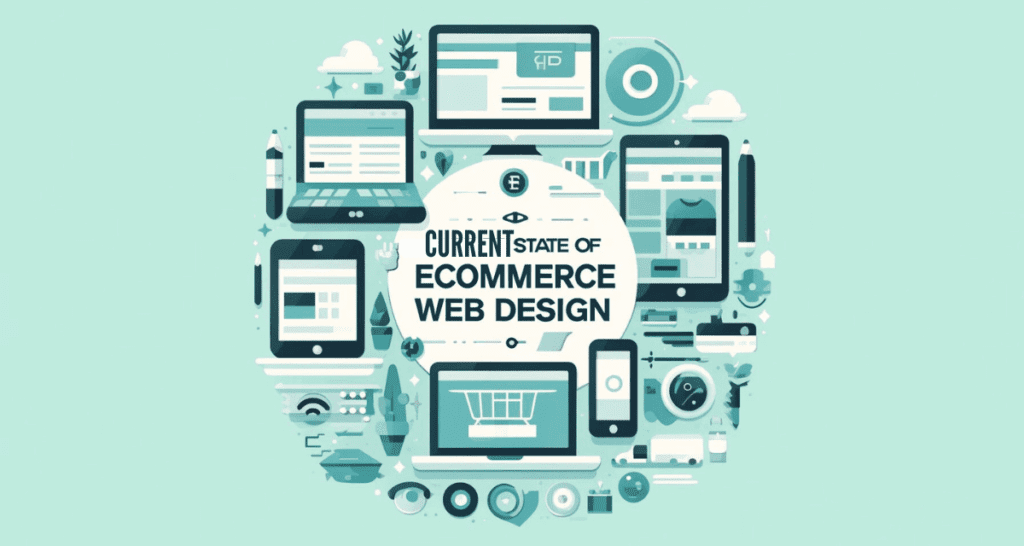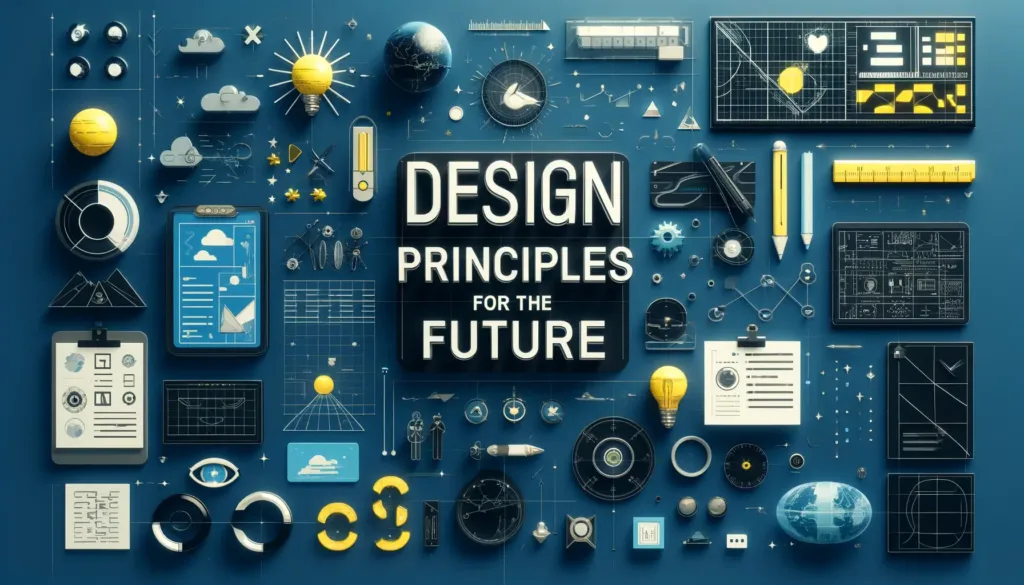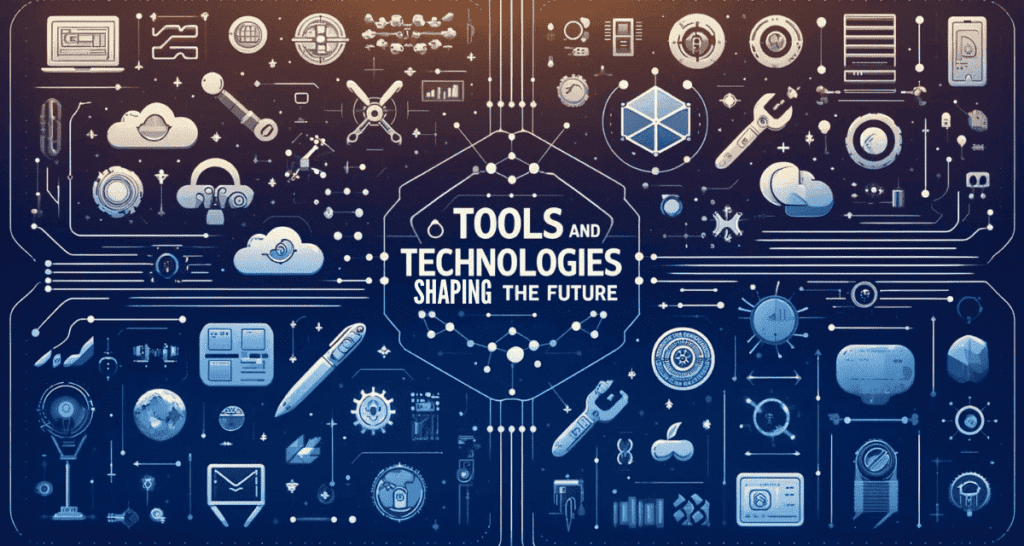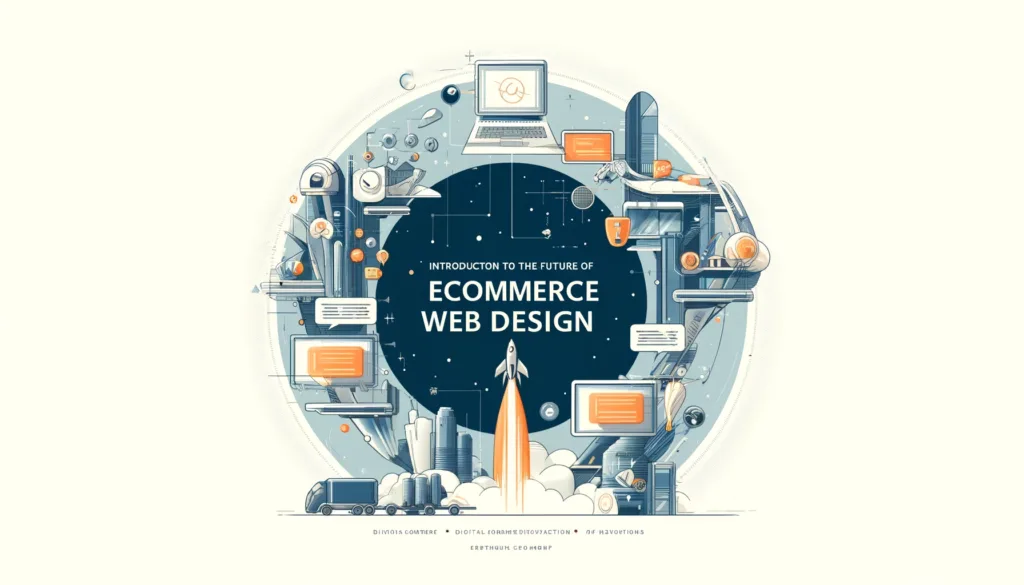In the rapidly evolving world of ecommerce, understanding the latest web design trends is important. This guide dives into the exciting future of ecommerce web design, revealing how emerging technologies and consumer behaviors are shaping online shopping experiences. As we explore what lies ahead, businesses and web designers alike will find invaluable insights to stay ahead in a competitive marketplace.
Current State of Ecommerce Web Design


Overview of Design Trends and Technologies
In today’s digital marketplace, certain trends and technologies stand out. They not only define user experiences but also set the stage for future innovations. For instance, mobile-first designs are not just popular—they are essential, as most shoppers use their smartphones to browse and buy products.
Growth and Impact
The growth of ecommerce is phenomenal. Recent statistics suggest that online shopping is becoming the norm for millions worldwide. This shift demands that businesses ensure their websites are not only attractive but also functional and fast.
Consumer Behavior
Understanding consumer behavior is key. Today’s consumers expect a seamless shopping experience. This includes easy navigation, fast loading times, and, importantly, secure checkout processes. Websites that meet these expectations tend to perform better in terms of sales and customer loyalty.
Emerging Trends in Ecommerce Web Design


AI-Driven Personalization
AI-driven personalization is revolutionizing the way online shops interact with customers. By analyzing data like past purchases, browsing history, and search patterns, AI can offer personalized product recommendations and created content. This level of customization not only enhances the shopping experience but also significantly boosts conversion rates.
Integration of AR/VR
The integration of Augmented Reality (AR) and Virtual Reality (VR) into ecommerce is transforming consumer interactions. AR allows customers to visualize products in their own space, like seeing how a sofa fits in their living room, while VR provides immersive experiences, such as virtual store walk-throughs. These technologies help bridge the gap between online and physical shopping, offering a more interactive buying experience.
Voice Commerce
Voice commerce is gaining traction as more households adopt smart speakers. Consumers can make purchases simply by speaking commands, making shopping more accessible and convenient. This trend is particularly appealing in environments where hands-free operation is preferred, such as during cooking or driving. Discover more about impact of voice search on ecommerce.
Advanced Analytics
With advanced analytics, businesses can go beyond traditional metrics to uncover deeper insights into consumer behavior, preferences, and engagement patterns. These insights inform smarter decisions about website design and user experience, aiming to optimize both for increased engagement and sales. Advanced analytics tools can track user paths, detect abandonment points, and suggest design adjustments in real-time. Read about advanced analytics using Google Trends.
Design Principles for the Future


Simplicity in Design
Simplicity in web design means focusing on essential elements, avoiding over-cluttered layouts, and prioritizing ease of use above all. A minimalist design can help reduce user confusion, improve load times, and enhance overall user satisfaction.
Resource: Benefits of Simplicity in Web Design
Application: Implement a straightforward layout with ample white space, and use clear, concise language. Ensure that every design element serves a functional purpose, enhancing the shopper’s journey rather than distracting from it.
Accessibility
Making your website accessible means ensuring that all potential users, including those with disabilities, can use it effectively. Accessibility can expand your audience significantly, improve your site’s SEO, and enhance your company’s image.
Resource: Web Accessibility Guidelines
Application: Design with color contrast that aids visibility for visually impaired users, include alt text for all images, and use headers correctly to structure your content logically. These steps help users who utilize screen readers and those with other disabilities to navigate your site more effectively.
Sustainability in Web Design
Sustainability in web design focuses on creating sites that use less energy, both in the data centers and on the user’s device. This can be achieved through optimized performance and environmentally conscious design choices.
Resource: Sustainability and Web Design
Application: Minimize the use of large images and videos that require significant energy to load. Opt for green web hosting services, and write cleaner, more efficient code. Additionally, consider the environmental impact of your server locations and data storage choices.
Tools and Technologies Shaping the Future


API-First Design
API-first design is a development approach that starts with creating APIs that are optimized for a particular function before developing the rest of the application. This approach ensures that your ecommerce platform can integrate smoothly with other systems and services, which is key for a scalable and flexible web design.
Resource: Understanding API-First Design
Application: Use API-first design to enhance the interoperability of your ecommerce platform with mobile apps, third-party services, and multi-platform marketing tools. This makes it easier to manage user experiences across different devices and touchpoints.
Headless CMS
A headless CMS makes content management and delivery more flexible by separating the back end from the front end. This separation allows developers to use any front-end tool to display the content, which is especially useful for designs that need to appear across multiple platforms.
Resource: Advantages of a Headless CMS
Application: Implement a headless CMS to quickly adapt and deploy content changes across all platforms without redesigning or disrupting the user interface. It’s perfect for maintaining a consistent user experience, whether your customer is shopping on a mobile device, a laptop, or even through a smart speaker.
Progressive Web Apps (PWAs)
Progressive Web Apps (PWAs) offer an app-like experience using web technologies. They load like regular web pages but offer additional features like offline accessibility, push notifications, and device hardware access traditionally only available to native applications.
Resource: Introduction to Progressive Web Apps
Application: Develop a PWA to ensure your ecommerce site is fast, reliable, and engaging. PWAs can dramatically improve the mobile shopping experience, offering features like quick re-engagement through push notifications and seamless offline operations.
Responsive and Adaptive Design
In the context of a mobile-first approach, responsive and adaptive design technologies are essential. Responsive design ensures your ecommerce site works well on any device by adjusting the layout based on the screen size. Adaptive design goes further by detecting the device and loading a specific layout for it.
Resource: Responsive vs. Adaptive Design
Application: Use responsive design techniques to provide an optimal viewing experience—easy reading and navigation with minimal resizing, panning, and scrolling—across a wide range of devices. Employ adaptive design when targeting specific devices with unique features or limitations.
Challenges and Considerations


Technical Complexity and Cost
Implementing cutting-edge technologies such as headless CMS or Progressive Web Apps (PWAs) can be technically complex and potentially expensive. The initial setup, migration, and maintenance might require significant investment in terms of both time and resources.
Application: Plan and budget for the potential high costs and resource allocation needed. Consider phased implementations or starting with a pilot project to mitigate financial risks.
Security Concerns
With the increasing amount of personal and payment information being processed online, security is a paramount concern. New technologies must be implemented with a strong focus on protecting consumer data.
Resource: Ecommerce Security Best Practices
Application: Ensure that all new systems are compliant with the latest security standards, such as GDPR in Europe or CCPA in California. Regular security audits and updates can help safeguard against breaches.
Keeping Up with Rapid Technological Changes
The pace of technological change is faster than ever, and keeping up can be daunting for any business. Adopting new technologies means committing to continuous learning and development.
Resource: Staying Updated with Technology Trends
Application: Dedicate resources to training and development. Staying informed about new advancements through professional networks and continuing education can help businesses remain competitive.
Legal and Ethical Considerations
As technology evolves, so do the legal and ethical considerations associated with its use. Issues like user privacy, data usage, and compliance with various international regulations become increasingly complex.
Resource: Legal and Ethical Issues in Ecommerce
Application: Consult with legal experts to understand the implications of new technologies. Developing a clear policy on data ethics and compliance can help maintain trust and protect against legal challenges.
Conclusion
The future of ecommerce web design is both exciting and challenging. As we’ve explored, emerging trends like AI-driven personalization, AR/VR integration, voice commerce, and advanced analytics are setting the stage for more dynamic, engaging, and user-friendly shopping experiences. Adopting these technologies, along with embracing essential design principles such as simplicity, mobile-first, accessibility, and sustainability, will equip businesses to thrive in an increasingly digital marketplace.
However, the path to modernization is fraught with challenges—from the technical complexity and cost of new technologies to security concerns and the need for continuous adaptation to legal and regulatory changes. By acknowledging and addressing these challenges head-on, businesses can not only mitigate risks but also capitalize on the opportunities presented by the digital age.
As we look to the future, the key to success in ecommerce lies in innovation, adaptability, and a relentless focus on the customer experience. Businesses that can adeptly navigate these changes will not only survive but also thrive, setting new benchmarks for online shopping and customer engagement.
- Leveraging Analytics for Web Design Optimization - April 30, 2024
- The Role of Artificial Intelligence in Web Design - April 29, 2024
- How to Create an Inclusive Web Design - April 26, 2024

